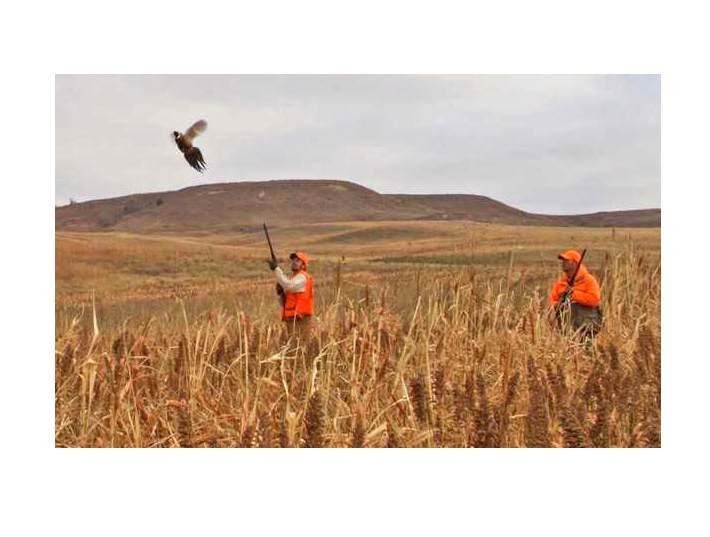It’s a Kansas tradition to open the pheasant and quail seasons on the second Saturday in November. If you’re a bird hunter, you’ve probably been losing sleep thinking about opening day.
The Kansas pheasant and quail season opens this Saturday. More than 80,000 hunters will hunt pheasants in Kansas, and while there is some overlap, more than 62,000 will hunt quail.
Approximately 40,000 of those hunters will be nonresidents. Conservatively, nonresident bird hunters will spend more than $150 per day on lodging, fuel, food and supplies while hunting in Kansas, adding much-needed dollars into the small communities that dot prime Kansas hunting regions, benefiting hundreds of businesses and philanthropies.
Kansas has long been a bird-hunting destination for hunters, who spend money on lodging, gas, food and other services while they’re here. Hunters provide many rural communities with an important economic boost each year.
According to the Kansas Department of Wildlife, Parks and Tourism hunting is big business and important to the state economy.
Officials remind hunters that landowner permission is required before hunting on private land, whether the land is posted or not. Land posted with purple paint on fence posts is the same as land posted with “Hunting By Written Permission Only” signs and both types require written permission before hunting.
Experts say upland bird hunting prospects are looking “good” for fall.
PHEASANT
Pheasant hunting in Kansas should be fair to locally good this year. Heavy winter precipitation made hunting conditions tough in 2018 but provided ample soil moisture entering the 2019 nesting season. A few late winter storms raised some concern in western Kansas, but the spring crowing index remained the same as 2018, indicating there was no measurable impact on over-winter survival. Heavy rainfall continued throughout the spring and resulted in high levels of nest abandonment. However, nests that did hatch appear to have responded to the plentiful cover with relatively high chick survival, indicated by larger brood sizes. In wet years like 2019, the nesting season becomes longer, allowing for multiple re-nesting attempts. Overall, the large brood sizes, combined with production from re-nesting birds appear to have compensated for the losses from extreme spring weather.
The counts through much of central Kansas decreased while numbers farther west increased or remained similar to last year. Kansas continues to maintain one of the best pheasant populations in the country and the fall harvest should again be among the leading states.
The highest densities this year will likely be in the High Plains regions of western Kansas.
QUAIL
Quail hunting in Kansas should be good in 2019. Kansas is still supporting above-average quail populations after a recent population boom. While total harvest has remained below average due to decreasing hunter participation, the average daily bag has remained at some of the highest levels observed in 20 years.
The bobwhite whistle survey in spring 2019 saw a modest decline following a generally poor production season in 2018. However, this is relative to a 20-year high in 2017, so despite the decline, spring densities were still well above average. The 2019 roadside survey index was just slightly higher than 2018, suggesting production compensated for any reductions previously recorded. However, regional quail densities have changed. Heavy precipitation and associated flooding across the eastern regions reduced productivity. While rainfall was also high across the western regions, a mid-summer dry period and improved habitat increased production. While densities in the eastern-most regions have decreased, all remaining regional indices remain at or above their respective long-term averages.
Kansas maintains one of the premier quail populations in the country and harvest will again be among the highest this year.
The best opportunities will be found in the central regions, extending east into the northern Flint Hills and west into the Southern High Plains.
Pheasant and Quail season opens this weekend, and runs through Jan. 31.



